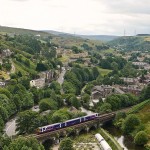http://www.engadget.com/2011/06/26/solar-sinter-solar-powered-3d-printer-turns-sand-into-glass-ren/
Markus Kayser’s Solar Sinter turns Saharan sand into a perfectly suitable glass bowl. There’s a neat video showing the process in action.
http://www.engadget.com/2011/06/26/solar-sinter-solar-powered-3d-printer-turns-sand-into-glass-ren/
Markus Kayser’s Solar Sinter turns Saharan sand into a perfectly suitable glass bowl. There’s a neat video showing the process in action.
http://wakeup-world.com/2011/11/28/the-discovery-of-dolphin-language/
“Researchers in the US and Great Britain have made a significant breakthrough in deciphering dolphin language in which a series of eight objects have been sonically identified”
Many people think in visual-spatial terms rather than audio-sequential. I know people who think in terms of music, and others who think in colours.
I think in 3D images, and find our human languages (I know a few) woefully inadequate for accurately expressing my thoughts – it’s too slow (low information density) and I’m too slow at drawing (plus 3D drawing has its problems on 2D surfaces).
Anyway, the point is that the article’s assertion that the dolphin way of thinking is fundamentally different to that of humans is simply incorrect. Humans are not all the same.
I envy the dolphins for having worked out a way to communicate that’s fast and descriptive, suitable for their 3D environment. Awesome!
http://confusedofcalcutta.com/2011/11/27/opensource-edible-landscapes-the-todmorden-story/
 If you’re particularly into bad news, there are many places that will indulge your particular interest today. This is not one of them. Here, I want to spend a little time on things that give me hope for humanity, things that have an uplifting effect on me; things that remind me that I have much to be thankful for, things that make my heart sing with joy. Like Todmorden. Todmorden is a old Domesday-Book-mentioned market town that is in both Lancashire as well as Yorkshire (depending on which side of the Calder you’re standing), with about 15,000 people and almost as many ways to pronounce its name (though the locals apparently just call it Tod). I’ve never been there. But I will. Soon. This post will tell you why. Sometime in 2009, I’d seen coverage of something happening in Todmorden that intrigued me. Locals there had apparently agreed to work together to try and become self-sufficient from the perspective of food. Their initial focus was on fruit and […]
If you’re particularly into bad news, there are many places that will indulge your particular interest today. This is not one of them. Here, I want to spend a little time on things that give me hope for humanity, things that have an uplifting effect on me; things that remind me that I have much to be thankful for, things that make my heart sing with joy. Like Todmorden. Todmorden is a old Domesday-Book-mentioned market town that is in both Lancashire as well as Yorkshire (depending on which side of the Calder you’re standing), with about 15,000 people and almost as many ways to pronounce its name (though the locals apparently just call it Tod). I’ve never been there. But I will. Soon. This post will tell you why. Sometime in 2009, I’d seen coverage of something happening in Todmorden that intrigued me. Locals there had apparently agreed to work together to try and become self-sufficient from the perspective of food. Their initial focus was on fruit and […]
Five highly valuable minutes – take it all in.
http://www.abc.net.au/news/specials/coal-seam-gas-by-the-numbers/
Coal seam gas has emerged as a major industry in Australia in little more than a decade.
The scale and speed of its growth has been nothing short of astonishing: billions of dollars have poured into regional areas; new jobs have been created; state and national coffers have swelled; export contracts have been signed and sealed; massive liquefied natural gas facilities have been approved for construction at regional ports.
Farmers fear they are losing control of their land. Miners and some politicians say coal seam gas offers a much greener energy choice. Environmentalists and other politicians have cast doubt on those claims.
The ABC’s data journalism project has pulled together information from dozens of sources to provide an insight into the promise and the dangers inherent in the coal seam gas rush.